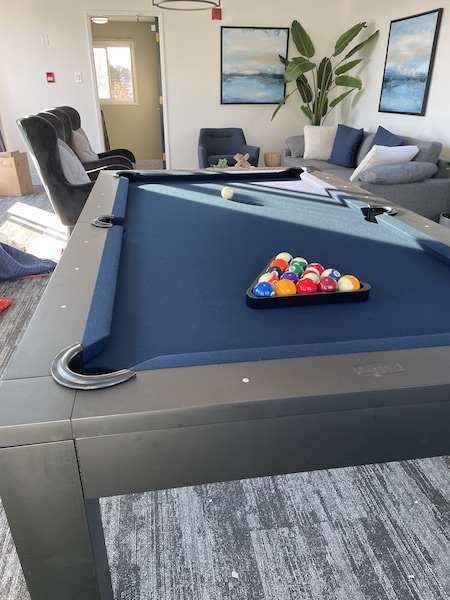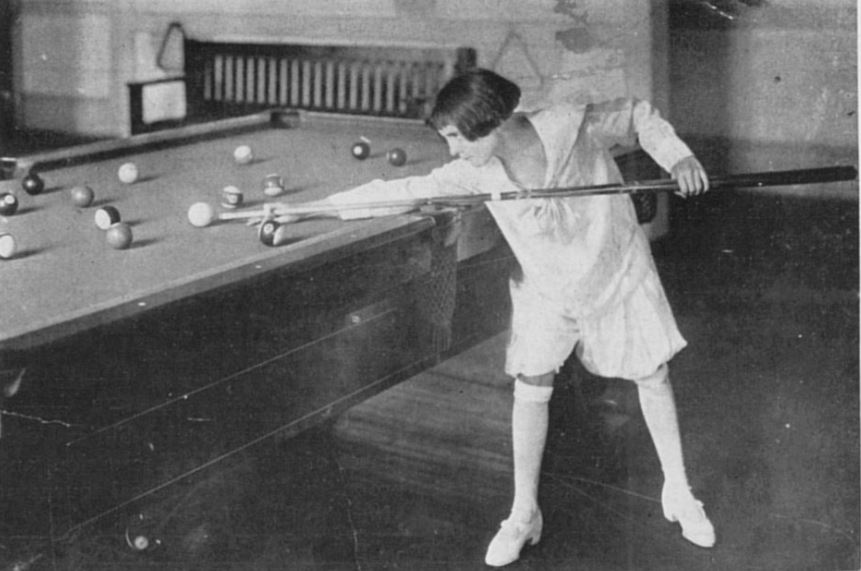History of Billiards: Who & When was Billiards Invented: The 600-Year History of Billiards You’ll Love
Posted by Home Billiards on 12th Sep 2024
From its origins on grass courts to the sleek, modern tables found in homes and upscale billiard halls today, Billiards has evolved in remarkable ways.
Learn about the invention of billiards, its evolution, how variations of the game emerged, its effect on culture, and everything else that's led to the state of the game you know today.
Whether you're a casual player or a serious enthusiast, you’ll finish this article with a deeper, richer appreciation of the game.
Key Takeaways
Don’t have the time to read the whole article? Here’s what you need to know about the history of billiards in a nutshell:
- Billiards originated in 15th-century France, evolving from outdoor lawn games played by nobility.
- King Louis XI commissioned the first indoor billiard table, further popularizing the game within royal circles.
- The leather cue tip, invented by François Mingaud in the 18th century, revolutionized billiards by allowing players to apply spin and improve precision.
- The game gained traction thanks to pioneers like Michael Phelan, known as the "Father of American Billiards,” who helped standardize it by writing the first book of billiard rules.
- Through the 18th, 19th, and 20th centuries, billiards developed into distinct variations like carom, pool, and snooker, each with unique rules and strategies.
- Women like Ruth McGinnis and Masako Katsura played key roles in breaking barriers for female players in the historically male-dominated sport.
When Was Billiards Invented?
Billiards, as we know it today, has its origins in Europe, particularly in France, in the 15th century. That makes it over 600 years old!
It evolved from outdoor lawn games, similar to croquet, popular among the nobility. These games were played with wooden mallets and balls, and as weather conditions worsened, the game moved indoors. Players began using wooden tables covered with green cloth to simulate grass, marking the beginning of indoor billiards.
Who Invented Billiards?
It’s not known who invented Billiards, but the first written reference to it appeared in a 1470s French inventory, indicating that the game had already gained prominence among the wealthy elite. The game's terminology stems from the French words "billard" (a wooden stick) and "bille" (ball), reflecting its essential components.
But King Louis XI of France is credited with commissioning the first indoor billiard table. Similarly, in the 16 century, influential figures like Queen Catherine de’ Medici of France organized billiard tournaments to honour her late husband, King Henri II. These moves mark perhaps the first big bumps in popularity for billiards, helping it become a favoured royal pastime in England and other parts of Europe.
How Did the Game Evolve?
Billiards underwent significant changes over the centuries, most notably in cue design, the standardization of rules, the breakout of different kinds of billiards, and their accessibility to different levels of society.
As mentioned, it moved from outdoor to indoor games in the late 15th century. By the 17th century, the cumbersome mace used to strike the ball was replaced by the more precise cue stick, marking a significant advancement in gameplay.
In the 18th century, François Mingaud revolutionized billiards by inventing the leather cue tip. This tip allowed players to apply spin, which enhanced control and precision. This advancement in technique propelled the sport’s growth, and billiards quickly became a favourite in England’s upper-class social clubs.
Meanwhile, in America, the game gained traction thanks to pioneers like Michael Phelan, known as the "Father of American Billiards,” who helped standardize it by writing the first book of billiard rules.

Historic print depicting Michael Phelan's Billiard Saloon at the corner of 10th Street and Broadway in Manhattan, January 1, 1859. By Unknown author - New York Public Library picture collection online; Direct link to image, Public Domain, https://commons.wikimedia.org/w/index.php?curid=1499742
By the 19th century, billiards had transformed into an organized sport with established rules and numerous variations, such as pool, snooker, and carom billiards (more on those below). The sport’s evolution continued across Europe and America, securing its place as a globally recognized pastime enjoyed by enthusiasts from all walks of life.
These developments—from the introduction of indoor tables to the creation of the cue stick and the refinement of techniques—played a pivotal role in shaping billiards into the sophisticated, strategy-driven game it is today.
How Did the Different Billiard Variations Come About?
Billiards evolved into several distinct games as they spread across the globe, each catering to different preferences and styles of play.
Carom billiards
Carom billiards is one of the oldest forms of billiards, played without pockets on the table. The objective is to score points by striking the cue ball to hit the other two balls on the table. This version became popular in Europe, particularly in France.
Pool (aka Pocket Billiards)
Pool became a household name in the United States as one of the most popular bar games ever. Unlike carom, pool tables have six pockets; the most recognized formats are 8-ball and 9-ball. Thanks to saloon culture, pool's popularity soared in the U.S. in the 19th century, making it the most widely played version of billiards in America.

What started as an outdoor game on the grass evolved into today's beautiful pool tables.
Snooker
Snooker, a British variation of pool, is played on a much larger table than pool and requires potting balls in a specific sequence. It gained traction during British colonial rule, particularly in India. The game features 21 balls of different colours, with a complex scoring system, making it one of the more strategic forms of billiards.
Each variation of billiards has unique rules and strategies, reflecting the cultural preferences of the regions where they became popular.
Women in Billiards
Women have played an important role in billiards history, although they often had to overcome significant barriers in a male-dominated sport.
Ruth McGinnis (1910 – 1974)

One of the first trailblazers was Ruth McGinnis, a straight-pool sensation in the 1930s. McGinnis was famous for her incredible skill, setting high records at a young age and consistently beating male champions. Despite the societal limitations of her time, she toured the country, showcasing her skills in exhibitions to bring billiards into the mainstream.
Masako Katsura (1913 – 1995)
Another key figure was Masako Katsura, the "First Lady of Billiards." In the 1950s, Katsura was the first woman to compete for an international billiards title, earning a reputation for her precision and grace. Having honed her skills in Japan, Katsura broke into the predominantly male American scene, proving herself against top competitors like Willie Hoppe. Her ambidextrous play and impressive three-cushion shots astounded audiences and helped pave the way for future female players.
Women's Professional Billiards Association (WPBA)
The modern era of women’s billiards saw the establishment of the Women's Professional Billiards Association (WPBA) in 1976. This organization provided a formal platform for women to compete professionally. Today, players like Allison Fisher and Jeanette Lee continue to inspire a new generation of women in the sport.
Billiard Icons Throughout History
Billiards has seen many superstars and trailblazers emerge throughout history, some of them becoming so popular that they’re even known to those outside of the sport of billiards.
Efren "The Magician" Reyes (1980s - Present)
Efren Reyes pockets an almost impossible shot during 9-ball championship finals.
Hailing from the Philippines, Efren Reyes is regarded as one of the greatest billiard players ever. With over 100 professional tournament wins, including international titles in 9-ball and 8-ball, Reyes gained his nickname due to his seemingly impossible trick shots that left both competitors and audiences in awe. His humble demeanour and incredible skill have earned him global recognition as a true sports legend.
Willie Mosconi (1930s - 1950s)

Willie Mosconi. (2024, July 17). In Wikipedia. https://en.wikipedia.org/wiki/Willie_Mosconi
Known as "Mr. Pocket Billiards," Willie Mosconi dominated the billiard scene from the 1940s to the 1950s, winning the World Straight Pool Championship 15 times consecutively. His precise and calculated approach to the game made him one of the most respected players of his era. Mosconi's influence extended beyond the pool table when he coached Paul Newman for the 1961 film The Hustler, further solidifying his status as a billiards icon.
Jeanette "The Black Widow" Lee (1990s - Present)

By KIYOUNG KIM - Flickr: 031, CC BY 2.0, https://commons.wikimedia.org/w/index.php?curid=75498758
Jeanette Lee is one of the most famous female pool players in history. Known for her fierce competitiveness, Lee's persona as "The Black Widow" came from her ability to "devour" her opponents on the table. She has won over 27 national and international titles, competing at the highest levels against both male and female players, making her a groundbreaking figure in the sport(
Earl "The Pearl" Strickland (1980s - Present)
Earl Strickland pocketing a trick shot on a pool table,
An American player with a reputation for intense focus and impeccable shot-making abilities, Strickland has won five U.S. Open 9-Ball Championships and two World 9-Ball Championships. His competitive nature and bold personality have made him both a fan favourite and a controversial figure in the world of billiards(
Rudolf "Minnesota Fats" Wanderone (1930s - 1980s)
A larger-than-life personality, Minnesota Fats became famous for his playing style and his ability to hustle and charm his opponents. While he may not have won as many championships as some of his peers, his influence on the game, particularly through his appearances in the media, made him a legendary figure in American billiards.
These players, along with others such as Shane Van Boening and Allison Fisher, have helped shape the game of billiards into what it is today. Their achievements and unique styles continue to inspire casual players and professionals alike.
Billiards in Popular Culture
Billiards has left a significant mark on popular culture, appearing in films, TV shows, literature, music, and art. Its portrayal ranges from gritty and competitive to lighthearted and symbolic, making it a versatile storytelling and character development theme.
Billiards in movies
One of the most iconic billiards films is The Hustler (1961), starring Paul Newman as "Fast Eddie" Felson, a small-time pool hustler trying to make it big. The film and its 1986 sequel, The Color of Money (starring Tom Cruise), helped cement billiards as a symbol of strategy, skill, and psychological intensity. These films showcased high-stakes pool games and portrayed billiards as a test of personal ambition and endurance.
Billiards in TV shows
Billiards has also appeared in numerous TV shows. In Breaking Bad, the game is used as a metaphor for power dynamics and control, especially in scenes involving the protagonist, Walter White. Similarly, The Sopranos often featured billiards as a backdrop to pivotal scenes, highlighting themes of manipulation and tension.
Billiards in music and art
Billiards has even influenced music and fashion, with songs like Billy Joel's The Ballad of Billy the Kid referencing pool and retro-inspired billiards fashion, making it a popular style. The game's imagery, including pool cues and balls, often symbolizes skill, focus, and competition in visual art and music videos.
That Brings Us to Modern Day Billiards
Billiards is more than just a game; it's a sport that’s evolved through history in its accessibility, rules, skills, and variations, from noble beginnings to the version you now see at your local pool hall (or your living room).
Whether you're drawn to the precision of carom, the strategy of snooker, or the excitement of pool, adding a billiard table to your home is not just a source of entertainment; it’s also a slice of history!
Ready to experience the best of what modern-day billiards has to offer? Check out our pool tables for sale to find the perfect table for your home.
FAQs on the History of Billiards
How long has billiards been around?
Billiards has been played for over 600 years, originating in the 15th century. Initially an outdoor game, it evolved into the indoor version we recognize today.
What is the difference between pool, snooker, and billiards?
While all are cue sports, pool is typically played on a table with six pockets, using 15 numbered balls. Snooker has 21 balls and more complex rules, while billiards can refer to both carom billiards (played with no pockets) and English Billiards, which combine elements of pool and carom.
How did billiards become popular?
Billiards gained popularity through its association with European royalty and nobility, particularly during the reign of King Louis XI of France. Over time, its appeal spread across different social classes, evolving into the game we enjoy today.
Why is the billiard table green?
The green felt on billiard tables was designed to mimic the grass on which the original outdoor version of the game was played. This tradition has been carried on, giving the game a sense of continuity with its past.
How long should a pool table last?
For those investing in a billiard table, a common question is how long a pool table should last. Tables made with slate beds and durable hardwood frames are particularly long-lasting. Regular maintenance, such as replacing felt, levelling the table, and caring for the wood, can greatly extend its lifespan.
How have billiard tables improved over time?
Billiard tables have seen significant improvements in materials, design, and craftsmanship. Early tables used simple wooden surfaces, but modern slate pool tables now feature slate bases, high-quality cloth, and precision-engineered cushions for more accurate play.

